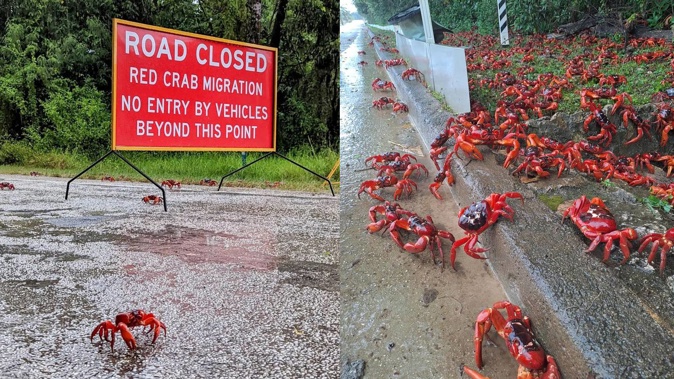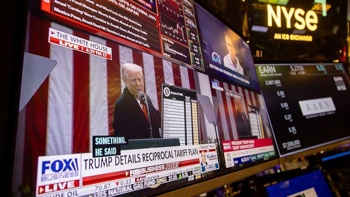
"It has started!" proclaimed the Christmas Island Tourism board.
On Christmas Island there's one event that defines the year. It's not the Yule tide but a red tide of crustaceans that brings festive colour to the island.
The Australian territory in the Indian Ocean is just 20km across, but every year it is visited by 65 million land crabs.
Marked by the beginning of the spring rains, heavy rainfall on Saturday set the forest floor alive with crustaceans.
Santa claws is coming to town!
Roads are closed to vehicles and the green of the famous Christmas Island Golf Course is inundated with crustaceans. There's a set of local play rules which dictate conditions during the migration.
"Players must treat the crabs as they would any other hazard. They cannot move them." And if a crab happens to take your ball, you must play it where it lands. Expect a long walk to the beach.
/cloudfront-ap-southeast-2.images.arcpublishing.com/nzme/BG4DDDGFL2GM4PUGUFSTPY3EIU.jpg)
The Christmas Island crab migration begins with the wet season in Late October to November. Photo / Raphael Bick, Unsplash
The local tourism board, Christmas Island Tourism said that it was just a spooky coincidence that the creepy crawlies emerged on Halloween.
"This phenomenon takes place each year after the start of the wet season, in synchronisation with the cycle of the moon," they wrote.
"Nowhere else on earth do crabs occur in these numbers and the spectacle is an experience not to be forgotten."
The Australian national park service says the phenomenon usually occurs in October to November but can happen as late as January.
When the crabs first arrive on the island they are tiny. Measuring just 5mm across they crawl inland unnoticed.
/cloudfront-ap-southeast-2.images.arcpublishing.com/nzme/53FDMKFSA2XMJTLTMXBR4KRJEU.jpg)
Crab overpasses are one of the best places to watch the migration, says the National Park. Photo / IslandGirlDiscovery, Christmas Island Tourism
With each female crab producing up to 100,000 the number amasses to millions of crustaceans, which live in burrows and on the forest floor for the first years of their lives. However, on the first new moon of the rainy season mature red crabs emerge from their burrows to spawn in the sea.
"The red crab migration is Christmas Island's biggest tourist attraction, drawing nature-lovers from all over the world," says the Christmas Island National Park.
The easiest way to see them is at the coast and rocky pools where up to 100 crabs gather per square metre. But on an island of just 135 square kilometres, they are hard to miss.
To protect the crabs, some roads close during the peak migration time, often at short notice, says the park. However pedestrians are welcome to walk among the crabs, which are not dangerous and pay little attention to anything other than getting to the beach.
"You will also see crab bridges built over the roads. These are great places to stand and watch the flow of crabs."
As an island sport local media and public notice boards are updated with the best places to watch the red tide make their way out to sea.
It's an experience naturalist Sir David Attenborough described as one of his greatest TV experiences, filmed in 1990 for The Trials Of Life.
The local tourism board publishes a predicted spawning dates on their website for visitors to plan their visit. christmas.net.au
Take your Radio, Podcasts and Music with you









